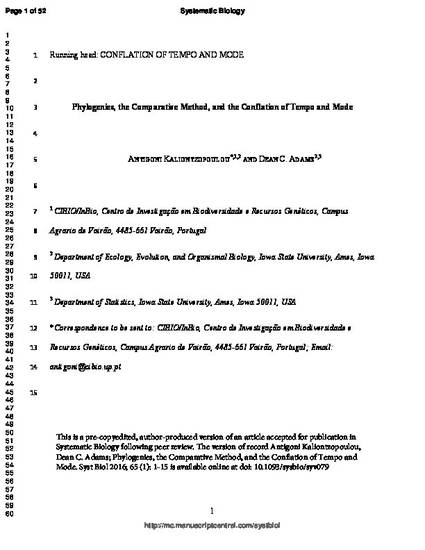
The comparison of mathematical models that represent alternative hypotheses about the tempo and mode of evolutionary change is a common approach for assessing the evolutionary processes underlying phenotypic diversification. However, because model parameters are estimated simultaneously, they are inextricably linked, such that changes in tempo, the pace of evolution, and mode, the manner in which evolution occurs, may be difficult to assess separately. This may potentially complicate biological interpretation, but the extent to which this occurs has not yet been determined. In this study, we examined 160 phylogeny × trait empirical datasets, and conducted extensive numerical phylogenetic simulations, to investigate the efficacy of phylogenetic comparative methods to distinguish between models that represent different evolutionary processes in a phylogenetic context. We observed that, in some circumstances, a high uncertainty exists when attempting to distinguish between alternative evolutionary scenarios underlying phenotypic variation. When examining datasets simulated under known conditions, we found that evolutionary inference is straightforward when phenotypic patterns are generated by simple evolutionary processes that are represented by modifying a single model parameter at a time. However, inferring the exact nature of the evolutionary process that has yielded phenotypic variation when facing complex, potentially more realistic, mechanisms is more problematic. A detailed investigation of the influence of different model parameters showed that changes in evolutionary rates, marked changes in phylogenetic means, or the existence of a strong selective pull on the data, are all readily recovered by phenotypic model comparison. However, under evolutionary processes with a milder restraining pull acting on trait values, alternative models representing very different evolutionary processes may exhibit similar goodness-of-fit to the data, potentially leading to the conflation of interpretations that emphasize tempo and mode during empirical evolutionary inference. This is a mathematical and conceptual property of the considered models that, while not prohibitive for studying phenotypic evolution, should be taken into account and addressed when appropriate.
Available at: http://works.bepress.com/dean-adams/30/

This is a pre-copyedited, author-produced version of an article accepted for publication in Systematic Biology following peer review. The version of record Antigoni Kaliontzopoulou, Dean C. Adams; Phylogenies, the Comparative Method, and the Conflation of Tempo and Mode. Syst Biol 2016; 65 (1): 1-15 is available online at doi: 10.1093/sysbio/syv079.